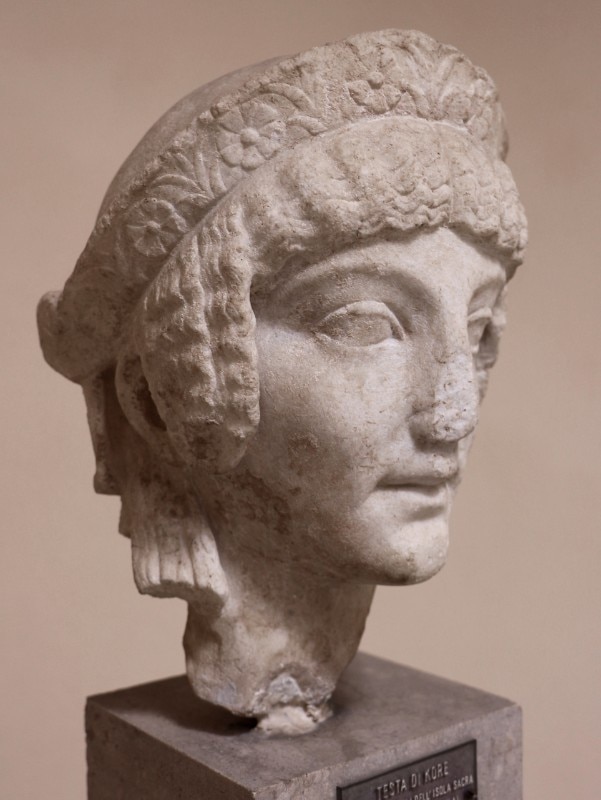Anger: temporary madness. This is how Homer described the feeling that today many people are almost indiscriminately pouring over the monuments of some of the most famous historical figures, like President Jefferson and Christopher Columbus, and the more recent Indro Montanelli.
How can a sculpture, a work of art, become the target of self-proclaimed freedom avengers? To punish history. Maybe. To kill art. More accurate.
History, narrative, contents, ideas. It is impossible to erase them, the physical act is reduced only to the object itself, which is the very narration of an artist, the very narration of a work of art.
Marble, plaster, bronze, alabaster. Materials that shape and give life to an idea, a thought, that exalt the man as a celebration of the man himself.
Statues represent. Kalòs kai agathòs, the good and the beautiful; in this, naturalness and inner strength become one. Human figures became a manifestation of a divine ideal, first, and of a historical ideal, then.

Sculpture started in the Classical period, that is during the Greek civilization, which laid the foundations, and then paved the way for the Roman civilization.
More than four thousand years ago, the “Idols” appeared in the Cycladic islands. These figurines depicted stylized human figures. The faces were smooth, flat, with the only exception of the nose: triangular and protruding. The Idols were made of white marble. The koúroi (men) and kórai (women) represented deities, images that were placed in the sanctuaries in the form of statues. The representation of a young generation in which the polis put all its hope, and which represented the best gift for the deities. In the most important places of worship of some cities, these statues were numerous, and grew to constitute ideal images in honor of the gods. The places where they were located were meaningful: the road that from the entrance of the sacred area led to the temple and then around the altar. They were journeys and places of community rites, processions and offerings of sacrifice: people participated to these together with the figurative incarnations of their norms and ideal models.
Roman sculpture, which was mainly celebratory, focused on the figure of the emperor, who was portrayed in official or private situations. On horseback, full-length, these were the official representations that tended to idealize the character and to exalt his moral qualities, while the more realistic, private ones faithfully portrayed the subject and showed his real character through the peculiarities of the somatic features.
The celebratory intent of sculpture was then abandoned, from the 16th century onwards, in order to make space for ornamental statues, which, when talking about sculpture in the round which did not require any background, had as their only purpose the evocative sense of an ancient, never-forgotten culture: muses, myths, symbols and allegories with elegant, romantic and refined forms. Religious thinking was never be abandoned: private or ecclesiastical clients continue to request sculptures depicting Virgins, Saints, Christians, which however all have a laudatory and devotional purpose.

At the beginning of the 19th century, however, artists refused this approach, believing that the representation of the civil values of that time and the recovery of national history and identity was more appropriate. Sculpture becomes a means of denunciation against social injustice and the horrors of war, and here come the new heroes, the new idols: men who have changed, modified and transformed history. Their thoughts, their ideas dictated what is now our present, and during their life, or shortly after their death, they were remembered, paused, immortalized by the skillful hands of an artist who recognized and affirmed their greatness, on which one could more or less agree, creating a portrait that would remind the old and the new generations that part of history.
Over the centuries, sculpture has changed its subjects, but never its purpose: to acclaim and make immortal a concept, an idea, a god, a hero.
In 2001, just before the attack on the Twin Towers, two huge Buddha statues carved out of the rock in the Bamiyan valley were destroyed by the Taliban. It is no secret that fundamentalists reject any kind of representation of worship, because they consider it a form of idolatry. An action that created a stir and then inspired, in different forms but with the same end, other similar actions. Shame, anger, denunciation for such a senseless act, without reason or motive, that had destroyed sculptural or architectural works of art. Beauty had been destroyed, the highest form of an emotional drive that has always sought nothing but idolatry. Why? Why is art being punished? Why, instead of stigmatising a fact, which is certainly not new, are unnecessary and counterproductive forms of protest being invented? Why not reopen books and contextualize the ideas of these people, who lived in a time when customs and habits were certainly not the same we have today, and who were acting out of a certain need that was objectively different from today’s?
Plato, in his Phaedrus, affirms: “But he whose initiation is recent, and who has been the spectator of many glories in the other world, is amazed when he sees any one having a godlike face or form, which is the expression of divine beauty; and at first a shudder runs through him, and again the old awe steals over him; then looking upon the face of his beloved as of a god (...). his memory is carried to the true beauty, whom he beholds in company with Modesty like an image placed upon a holy pedestal”.
Opening image: Antonio Canova, Paris, 1822-23, European Sculpture and Decorative Arts









